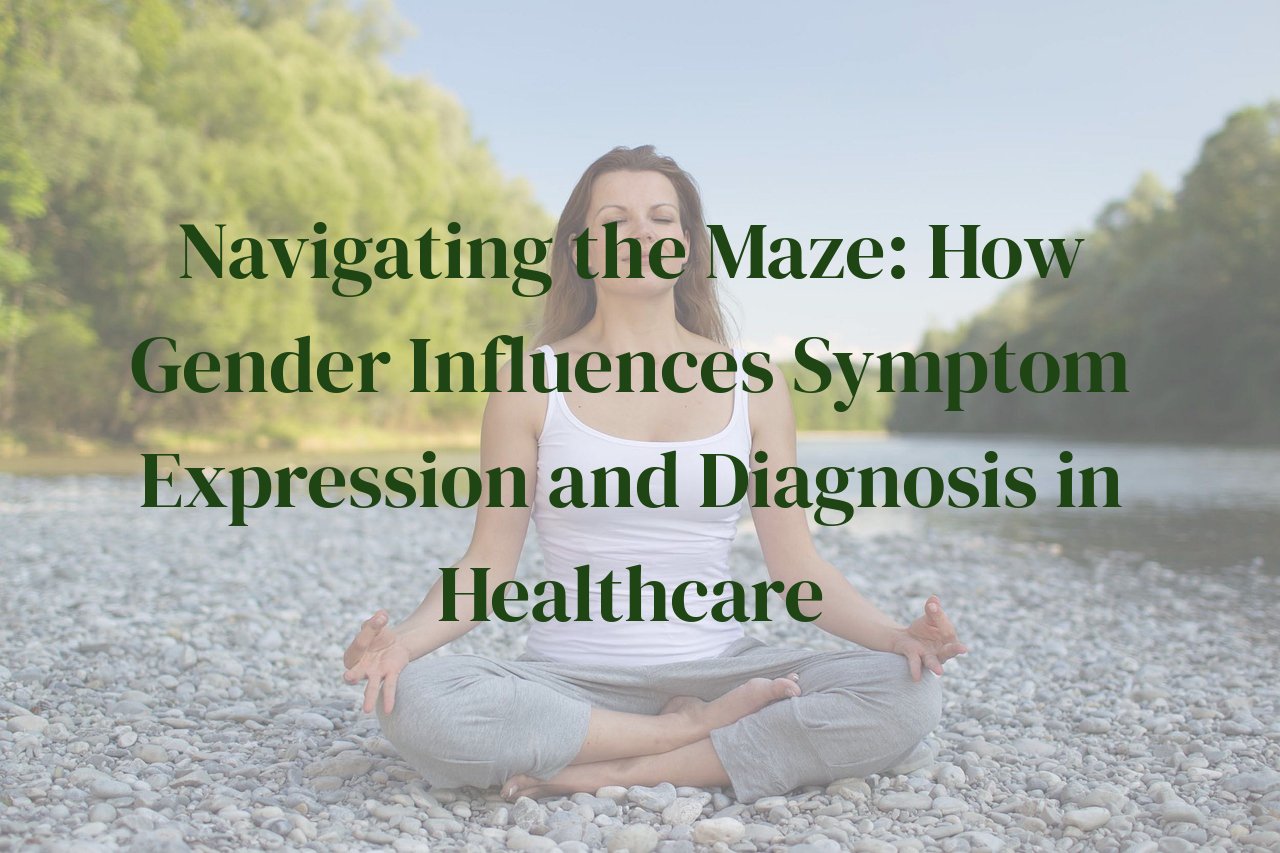
In the complex world of healthcare, one often unnoticed aspect is how gender can significantly influence the way symptoms are expressed and diagnosed. This post sheds light on these gender differences, providing valuable insights that could dramatically improve your understanding and management of healthcare issues.
By exploring this blog, you will uncover the nuances of how men and women exhibit different symptoms for the same conditions, how this affects diagnosis, and ultimately, how understanding these differences can lead to better health outcomes for everyone. Whether you’re a healthcare professional, a patient, or someone interested in health, this post has something crucial to offer you.
Table of Contents
Understanding Gender Differences in Symptom Expression
In the nuanced landscape of healthcare, recognizing gender differences in symptom expression is pivotal. It’s not just a scientific curiosity, but a critical factor that can dramatically affect the diagnostic process and outcome. Here, I’ll delve into some key aspects that elucidate why and how these differences manifest.
First and foremost, let’s talk pain. Numerous studies have shown that women often report more intense and persistent pain compared to men. This isn’t merely anecdotal. Biological factors such as hormonal fluctuations during menstruation, pregnancy, and menopause can amplify pain perception. When I worked in the emergency department, I often saw women presenting with conditions like chronic migraines or fibromyalgia, experiencing pain that was both severe and persistent. In contrast, men might endure the same conditions but report their symptoms less frequently, often attributing them to stress or fatigue.
Another aspect is emotional versus physical symptoms. Men are more likely to report physical symptoms like chest pain or shortness of breath, while women often report emotional or non-specific symptoms such as fatigue, anxiety, or a general sense of unwellness. Once, a middle-aged woman came into our clinic complaining of what she called ‘a sinking feeling’ that was later diagnosed as a heart attack. Her initial, more subtle symptoms starkly contrasted with the classic presentation often described by men.
Additionally, we can’t overlook socio-cultural conditioning. Men are often socialized to downplay their symptoms and ‘tough it out’, while women might be more forthcoming about their discomforts but are frequently not taken as seriously by healthcare providers. This dynamic creates a layered complexity that can lead to significant disparities in how conditions are identified and managed.
The biological clock plays another critical role. Women are at a higher risk for autoimmune disorders, and these often manifest during the reproductive years. It took nearly ten visits to different specialists before one of my female patients was diagnosed with lupus. Her initial symptoms—a mix of joint pain, fatigue, and nausea—were often dismissed as stress-related, which contrasts significantly with the prompt attention given to similar physical symptoms in male patients.
Let’s also consider mental health. Women are twice as likely to be diagnosed with depression and anxiety, conditions that can often mask physical symptoms. Men, on the other hand, may exhibit these conditions through substance abuse or aggression, making the initial symptoms easier to overlook as part of a mental health spectrum.
Finally, it’s essential to understand that these differences affect critical, life-altering diagnoses. For example, the typical ‘Hollywood heart attack’—chest-clutching and collapses—rarely occurs in women. They might experience jaw pain, dizziness, or profound fatigue instead, making quick and accurate diagnosis more challenging. A female relative of mine suffered from heart disease but was initially misdiagnosed multiple times due to her less stereotypical symptoms.
Navigating the maze of gender differences in symptom expression isn’t just about enhancing diagnostic accuracy. It’s about empathetic, inclusive, and informed healthcare that acknowledges and bridges these disparities. In my experience, increasing our awareness of these differences allows us to provide more nuanced, effective, and comprehensive care.
How Gender Bias Affects Diagnosis
One of the most concerning aspects of healthcare is how gender bias can influence the diagnostic process. These biases are often subtle but can have profound effects on patient outcomes. From my experience as a healthcare blogger, I have seen countless stories and studies highlighting how deeply rooted these biases can be.
Firstly, there’s the issue of ‘mind vs. body’ perception, where women are more likely to have their symptoms attributed to psychological causes rather than physical. For instance, women presenting with chest pain may be assumed to have anxiety or stress disorders, leading to a delay in diagnosing serious conditions like heart disease.
Secondly, diagnostic overshadowing is a significant problem. This occurs when a patient’s existing diagnosis distracts from potential new or different diagnoses. Women with existing mental health conditions frequently report that their symptoms for other ailments are dismissed or misdiagnosed because healthcare providers attribute them to their mental health status.
Another critical factor is the communication style in patient-doctor interactions. Studies have shown that women’s symptoms are often downplayed due to perceptions that women are more emotional or expressive. This implicit bias can result in their symptoms being taken less seriously and diagnosable conditions being overlooked.
Moreover, pain management is an area rife with gender bias. Numerous studies have demonstrated that women are less likely to receive adequate pain relief compared to men. This is especially true in cases of chronic pain where women’s complaints may be minimized or neglected entirely.
Bias also permeates medical research, where clinical trials have traditionally focused on male subjects, thereby influencing the diagnostic standards and treatments that may not fully consider gender-specific responses. This lack of representation can lead to misdiagnoses or even inappropriate treatments for women, as the medical community often lacks comprehensive data on how various conditions manifest differently across genders.
These gender biases do not just affect women; men also suffer albeit in different ways. Men might have their mental health symptoms dismissed or overlooked due to stereotypes around masculinity and stoicism, leading to underdiagnosis of conditions such as depression and anxiety.
From personal stories shared by readers of this blog, it’s evident that recognizing and addressing these biases can save lives. Doctors must be trained to be aware of these unconscious biases, and systematic changes need to be implemented within healthcare protocols to ensure a more equitable system. It’s about time we start acknowledging that gender differences in symptom expression and diagnosis are not just real but need urgent attention to improve healthcare outcomes for everyone.
Common Conditions with Gender-Specific Symptoms
Gender differences in healthcare extend to the presentation of various medical conditions. It’s fascinating how men and women can experience the same illness so differently, often influencing the course of treatment and the urgency of diagnosis.
Take heart disease, for instance. Men might experience the ‘classic’ crushing chest pain radiating to the arm, which is easily recognizable. Women, however, are often more likely to experience subtler symptoms such as fatigue, indigestion, or back pain. This discrepancy can lead to delayed diagnosis and treatment in women, proving fatal in some cases.
Depression also showcases gender-specific symptoms. While men tend to manifest depression through anger, irritability, or substance abuse, women might experience more emotional sadness, worthlessness, or guilt. These differences highlight the importance of gender-sensitive approaches in mental health diagnostics.
Anxiety disorders tell a similar story. Females are statistically more prone to manifesting anxiety through excessive worry and co-occurring conditions like panic disorders or phobias. Males, on the other hand, may display anger or aggression, making it less likely for them to seek traditional treatment for anxiety.
Autoimmune diseases, such as lupus and rheumatoid arthritis, are another good example. These conditions overwhelmingly affect women more than men and can present differently. Women may experience more severe joint-swelling, fatigue, and skin rashes, whereas men might have milder symptoms, sometimes leading to underestimation of the disease severity in men.
Finally, consider the gender-specific symptoms of urinary tract infections (UTIs). Women frequently experience a burning sensation during urination and a higher frequency to urinate. Men with UTIs might often present with symptoms that mimic other conditions, such as prostatitis or kidney stones, making the diagnosis less straightforward.
Having observed these gender-specific symptom differences in my own practice, I have come to appreciate the need for heightened awareness and sensitivity. It’s crucial for healthcare providers to recognize these variations to avoid misdiagnosis and ensure timely, appropriate treatment.
The Role of Hormones in Symptom Presentation
Hormones play a fundamental role in the way our bodies function, and their impact on symptom presentation is both profound and nuanced. From personal experience, I recall how subtle shifts in hormonal balance could cause drastic changes in my well-being, often making me question whether my symptoms were physical or psychological. This complexity is particularly evident when we examine gender differences in healthcare.
First, consider estrogen and progesterone, two primary female hormones. They don’t just control menstrual cycles and reproductive functions but also affect mood, pain tolerance, and even cognitive function. For instance, fluctuations in estrogen levels can lead to migraines or mood swings, often mistaken for other conditions. I remember consulting multiple specialists for my recurring migraines, each doctor offering a different diagnosis until finally, a gynecologist pinpointed the role of fluctuating estrogen during my menstrual cycle.
On the other hand, testosterone in men influences muscle mass, body hair, and even emotional well-being. Lower testosterone levels can present with symptoms such as fatigue, depression, and a decrease in libido. When my father exhibited such symptoms, it took several visits to healthcare providers before anyone considered checking his testosterone levels. This delay in diagnosis further highlights the need for heightened gender awareness in symptom interpretation.
Cortisol, the hormone released in response to stress, also behaves differently in men and women. Research suggests that women are more likely to experience prolonged exposure to high cortisol levels, potentially making them more susceptible to stress-related disorders such as anxiety and depression. Personal anecdotes from friends and family who’ve suffered from chronic stress reveal that understanding hormonal influences could have expedited achieving an accurate diagnosis.
Interestingly, thyroid hormones also illustrate gender-specific symptoms. Women are significantly more likely to develop thyroid disorders, which can lead to a range of symptoms such as weight gain, fatigue, and mood swings. It took years for a close friend of mine to get correctly diagnosed with hypothyroidism after initially being treated for depression, exemplifying how hormone-induced symptoms can be misinterpreted across genders.
Finally, let’s not forget the complicated role of insulin and its relationship with gender-specific symptoms of diabetes. Women with diabetes often experience more severe cardiovascular symptoms than men, a fact that can impede timely and accurate diagnosis. I believe that more focus on understanding these hormonal impacts can drastically improve patient outcomes.
In wrapping up, my journey and interactions with individuals facing these complexities have reinforced the importance of recognizing the role of hormones in symptom presentation. Hormonal differences not only shape the physiological experiences of men and women but also significantly influence how symptoms are perceived, expressed, and ultimately diagnosed.
Improving Diagnostic Accuracy Through Gender Awareness
Improving diagnostic accuracy through gender awareness is a critical facet of modern healthcare that requires a multifaceted approach. It is essential for healthcare professionals to be well-versed in the nuances of how gender can influence the presentation and diagnosis of various medical conditions.
Firstly, education and training play a vital role. Medical curricula need to integrate comprehensive gender-specific medical education to sensitize future healthcare providers about gender differences. By doing so, we can cultivate a new generation of clinicians who are alert to these disparities and can thus provide more accurate diagnoses.
Secondly, increasing awareness among existing healthcare professionals through continuous medical education (CME) and specialized workshops can bridge the knowledge gap. These programs should be designed to update professionals on the latest research findings concerning gender-specific symptoms and treatment protocols.
Moreover, the utilization of gender-specific diagnostic tools and guidelines can enhance diagnostic precision. For instance, tailoring cardiovascular risk assessment protocols to account for gender differences can lead to early detection of heart disease in women, who often present with non-typical symptoms.
In addition, fostering open communication between patients and healthcare providers is paramount. Encouraging patients to share all symptoms, however minor or unrelated they may seem, can significantly aid in drawing a complete clinical picture. Active listening and validating patients’ experiences, irrespective of gender, can lead to more nuanced and effective medical consultations.
Research and data collection also play a crucial role in improving diagnostic accuracy. Conducting gender-specific clinical trials and studies will provide robust data that can inform more precise diagnostic criteria and treatment protocols. For healthcare professionals, staying updated with the latest research findings can improve the quality of care substantially.
Last but not least, integrating a multidisciplinary approach to diagnosis where healthcare providers from various specialties collaborate can provide a comprehensive viewpoint. This team-based approach ensures that input from different perspectives is considered, leading to more accurate and gender-sensitive diagnoses.
In my personal experience as a healthcare provider, recognizing and addressing gender disparities has proven to be immensely beneficial in practice. For instance, once aware of how differently heart attack symptoms can manifest in women compared to men, I could make timely and life-saving interventions for my female patients. Such firsthand experiences underline the importance of integrating gender awareness into everyday medical practice.
Conclusion
In conclusion, recognizing and understanding gender differences in symptom expression and diagnosis can greatly enhance healthcare outcomes. By educating ourselves and others about these crucial differences, we can work toward a more equitable and effective healthcare system for all. Thank you for joining me on this exploration of a vital, yet often overlooked, aspect of medical science.



